BIRD LORE: Finches are returning this winter
By Wayne Laubscher, Lycoming Audubon Society
If you haven’t already done so, get your feeders filled and ready. Winter finches are returning. Moderate to good flights of some species are occurring now and more are possible.
Much of the boreal (northern) forest across the Canadian interior has a very poor to below average cone crop. Interestingly, the widespread forest fires in Canada earlier this year have apparently had no effect on finch movements because most of the burned areas had little to no cone crops.
However, the boreal forest east and south to the northeastern US states has widespread areas of heavy white pine cone crops and excellent deciduous tree seed and fruit crops. Some of the following species are already in our region and a few more will possibly show up.
Good numbers of Purple Finches will likely spend the winter in the northeastern US. Several areas in Pennsylvania have been reporting them for several weeks. They favor black oil sunflower seeds at feeders.
Image: Purple Finch male, courtesy Wayne Laubscher
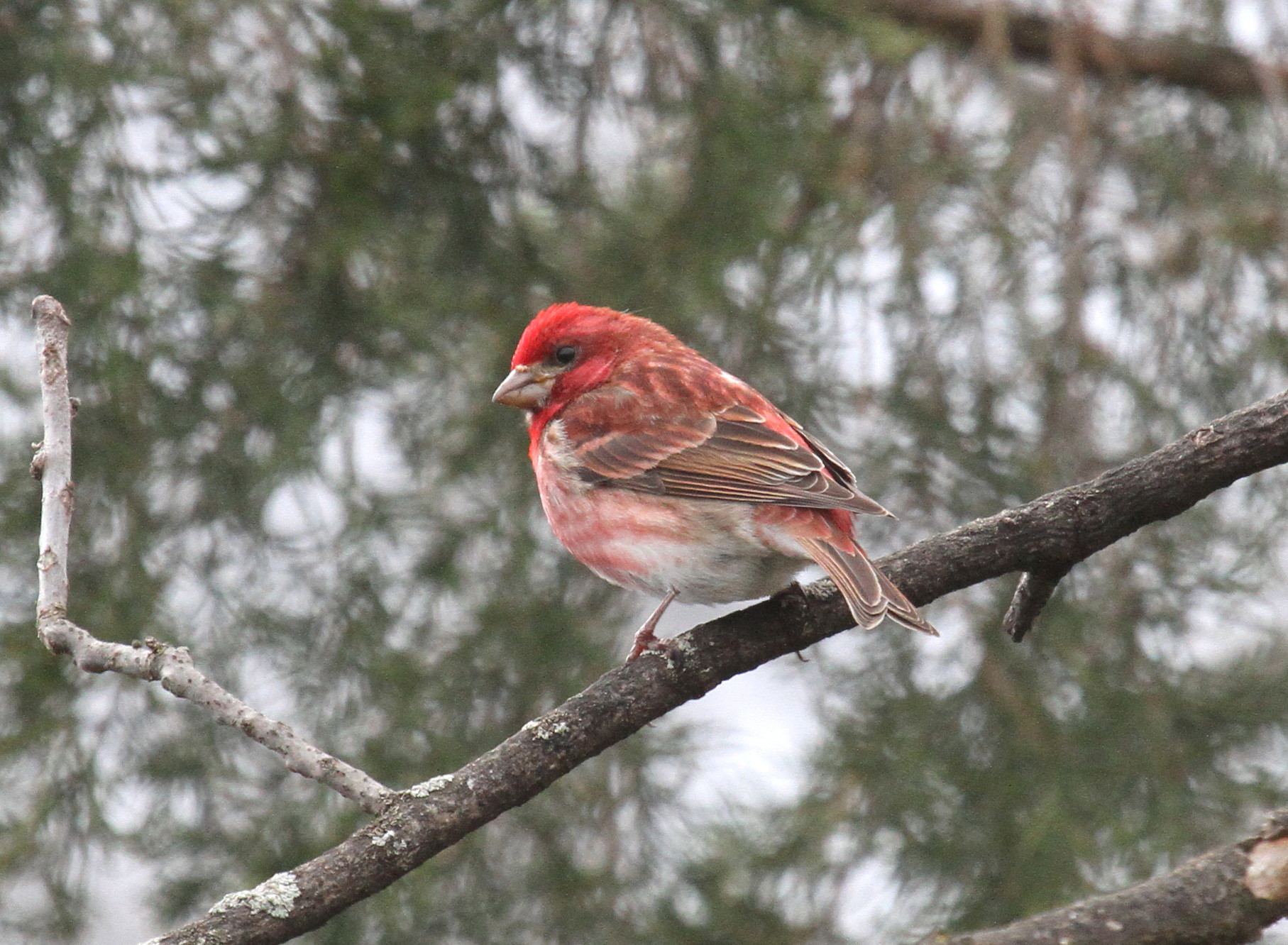
Pine Siskins have been showing up in moderate to good numbers in many areas of the region since early fall. This flight could develop into a strong movement as winter progresses. This gregarious and very vocal species prefers nyjer (thistle) in tube and sock feeders. They also feed on spruce and tamarack cones. In irruption years, Pine Siskins sometimes will remain into spring to nest.
Image: Pine Siskins sitting on a feeder, courtesy Wayne Laubscher
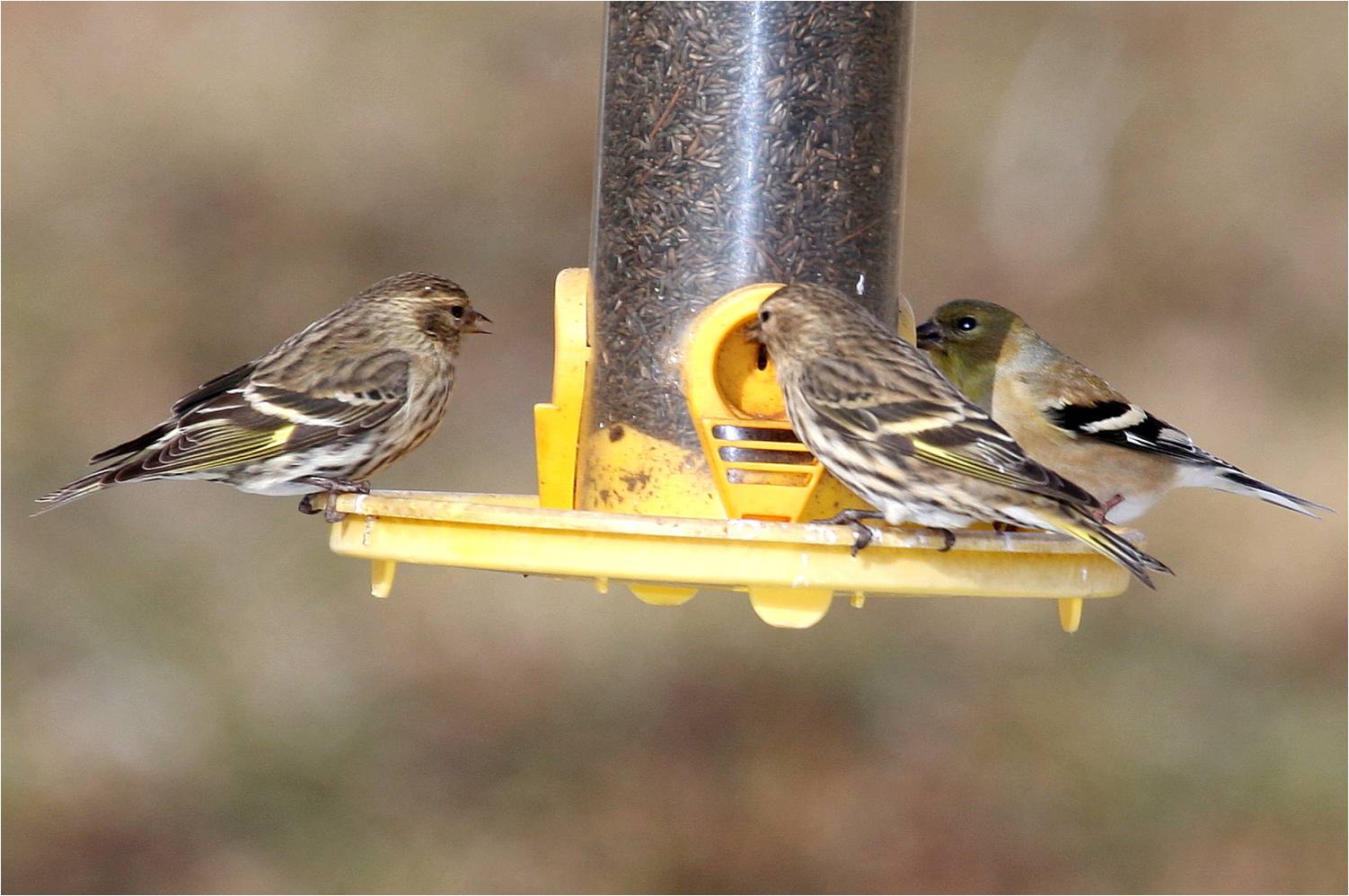
Small nomadic flocks of Red and White-winged Crossbills are moving south into the northeastern states. In fact, Red Crossbills have been reported in this region since at least late this summer. There is one record of Red Crossbills nesting in Clinton County this summer. A few White-winged Crossbills have been reported recently as well.
Image: White-winged Crossbill male, courtesy Wayne Laubscher
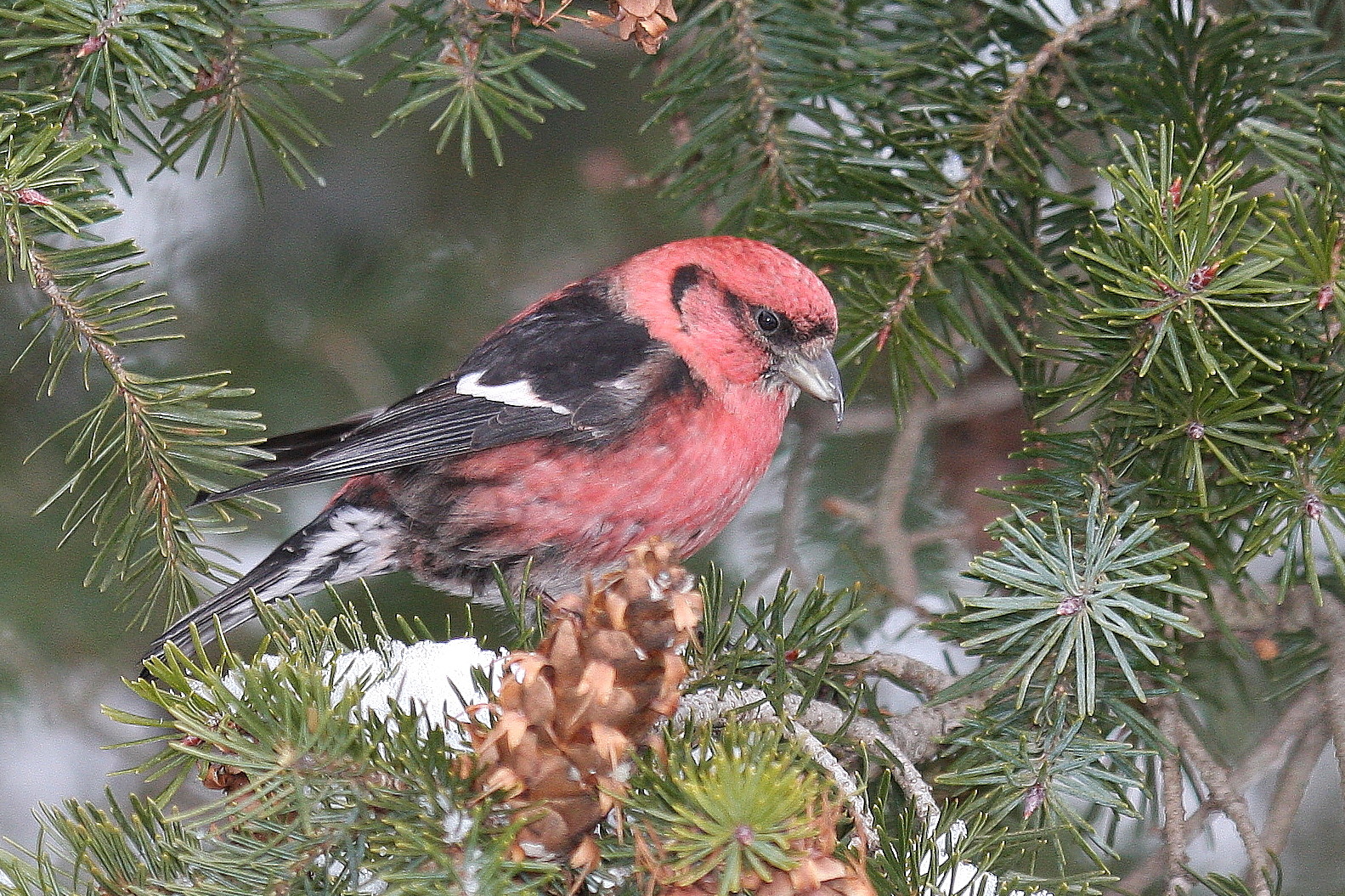
Look for crossbills feeding primarily on white pines but also red and white spruce into early spring. Stands of other pine species and also Norway spruce should also be checked. Crossbills are able to nest during any month of the year if adequate food is available.
The spruce and birch crops across most of the boreal forest are poor. Some Common Redpolls are expected to move south and may appear in our region. Look for them in alder and birch as well as weedy fields. Check for the rarer Hoary Redpoll in flocks of Commons. It is a much paler species that may be found. Redpolls will come to feeders with nyjer and black oil sunflower seed.
Image: Common Redpoll male, courtesy Wayne Laubscher
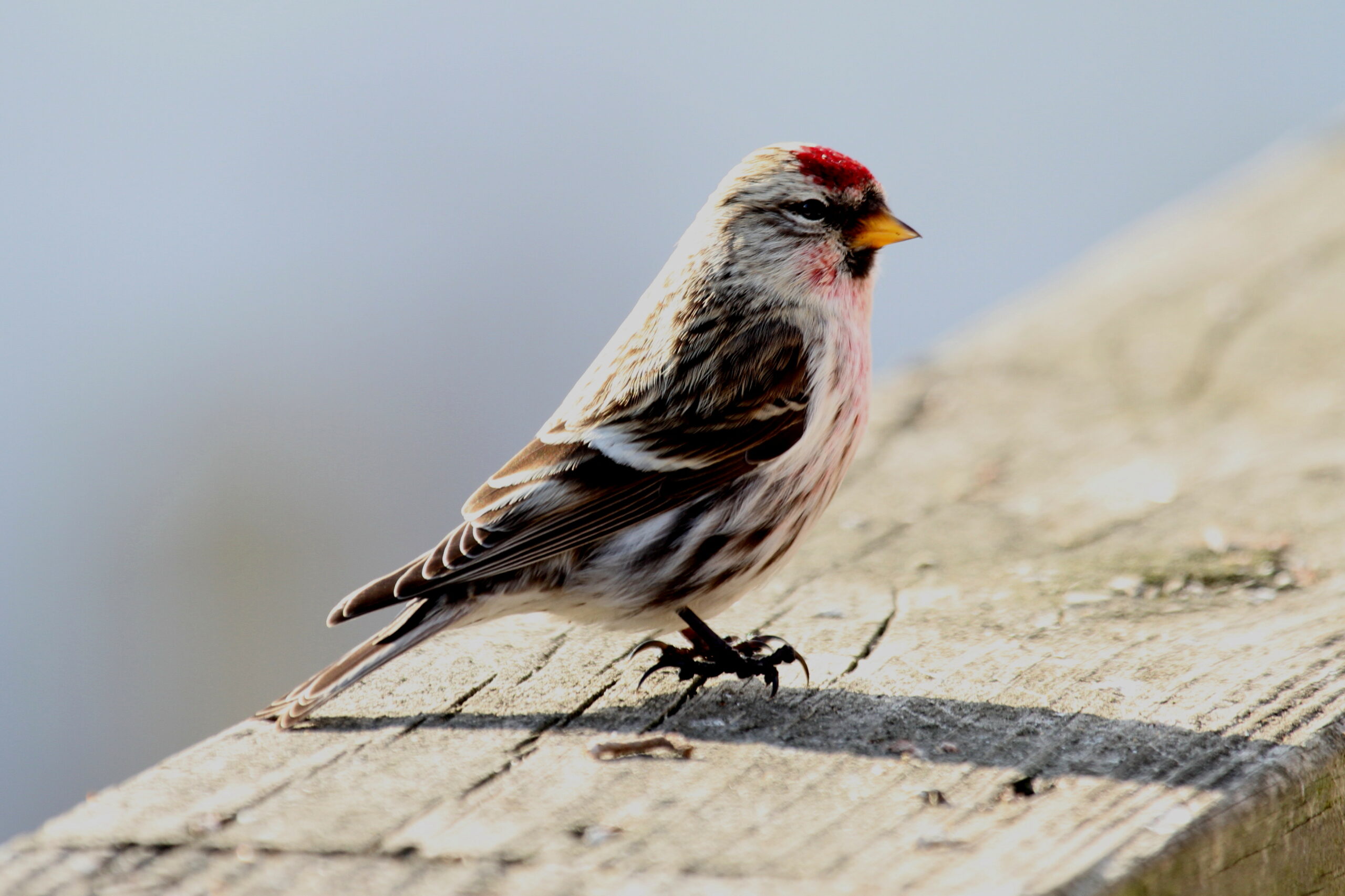
The large, showy, and noisy Evening Grosbeak is not expected to make a significant flight into this region but some are expected to winter in New England and New York. There have been a small number of sightings in Pennsylvania, however, so be on the lookout anyway. They readily consume black oil sunflower seeds on platform feeders.
Image: Evening Grosbeaks on a feeder, courtesy Wayne Laubscher
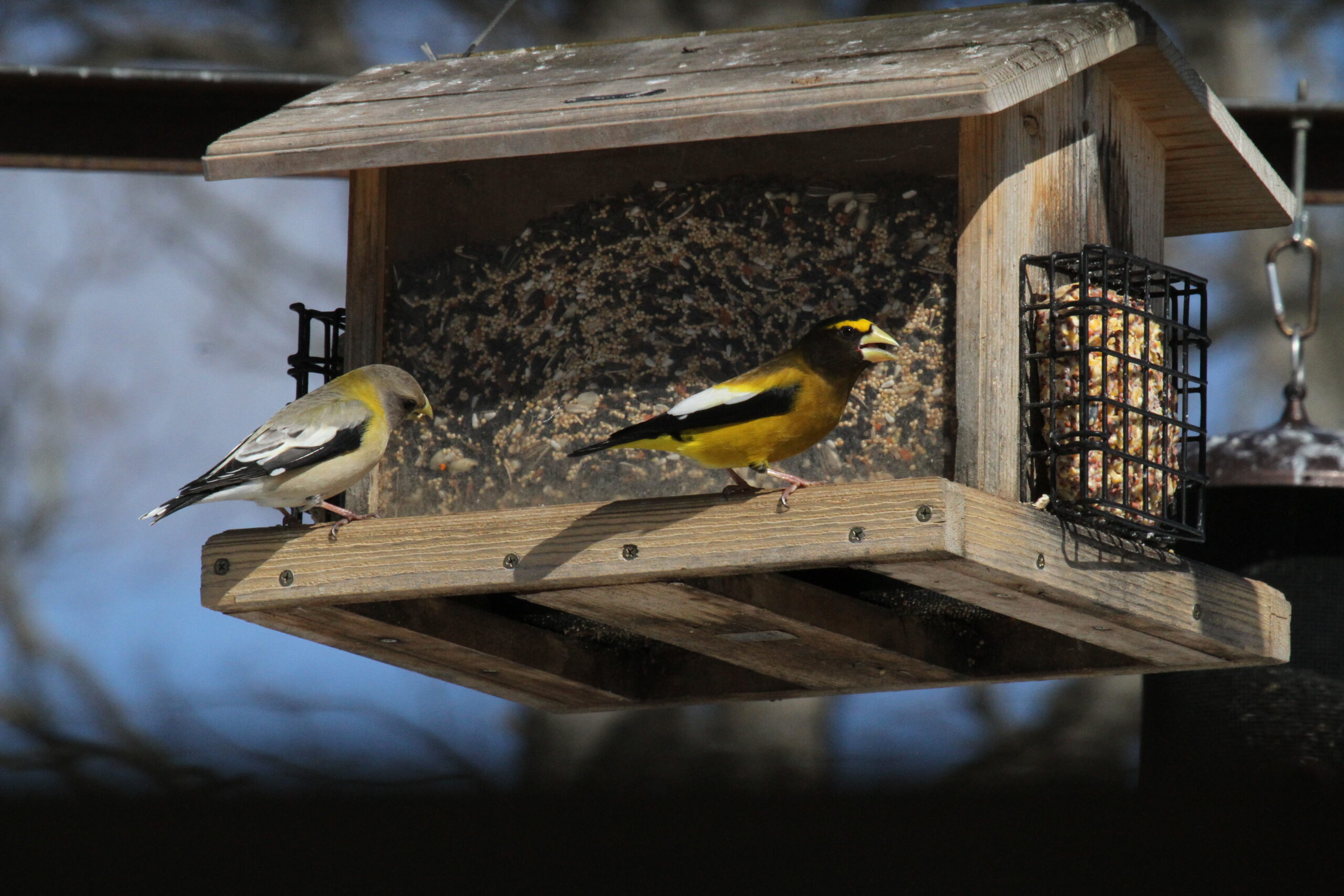
Keep your feeders up and filled and hopefully you will be rewarded with a great bird show this winter.
A thank you and information acknowledgment goes to forecaster Tyler Hoar and the Finch Research Network (finchnetwork.org) where more information can be found.
About the Author:
Wayne Laubscher is an official bander of hummingbirds, as well as saw-whet owls at his farm as part of the volunteer Project Owlnet. Currently, he works for the Centre County Planning Office. Wayne is the Clinton Co. compiler for the PA Birds publication, a member of the Lycoming Audubon Society board and a board member of the Pennsylvania Society for Ornithology. He is a native of the Lock Haven region, residing in Swissdale.
About BIRD LORE:
BIRD LORE is produced by the Lycoming Audubon Society (serving Lycoming and Clinton Counties), Seven Mountains Audubon (serving Union, Snyder, Northumberland, Montour and Columbia Counties) and Tiadaghton Audubon Society (serving Tioga and Potter Counties). Information about these National Audubon Society chapters can be found at lycomingaudubon.blogspot.com and sevenmountainsaudubon.org and tiadaghtonaudubon.blogspot.com.


